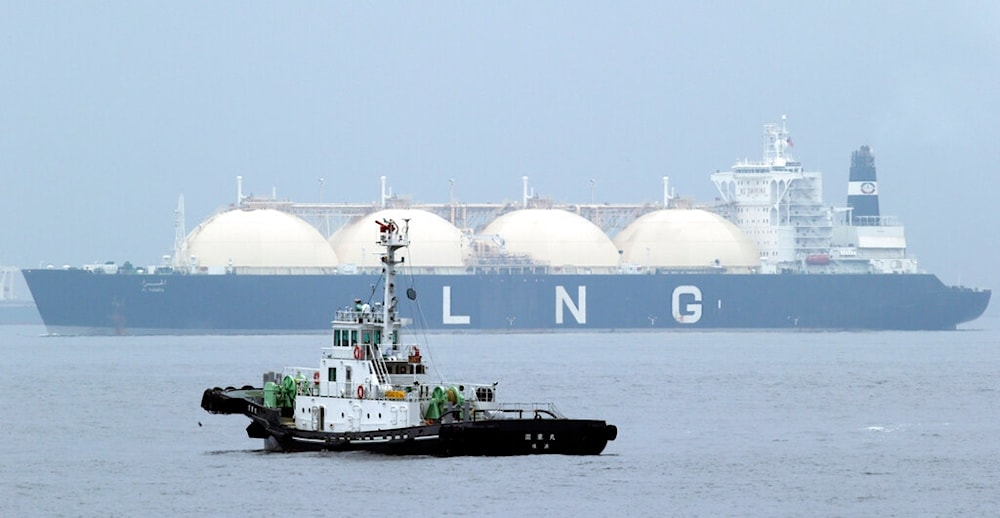US emerges as top LNG exporter in 2023: Shell's LNG outlook
In 2023 alone, the US exported 86 million tons of LNG
-

In this April 21, 2014 file photo, Liberian LNG, or Liquefied Natural Gas, tanker Al Hamra arrives at a port in Yokohama, southwest of Tokyo. (AP)
Shell's LNG Outlook 2024 report, released on Wednesday, revealed that the US became the largest exporter of LNG in 2023.
According to the report, in 2023 alone, the US exported 86 million tons of LNG, followed by Australia and Qatar, both of which have exported around 80 million tonnes.
Russia, on the other hand, exported over 30 million of LNG, followed by Malaysia.
The report further predicts a significant increase in global demand for LNG, expecting it to grow by more than 50% to reach 625-685 million tonnes annually by 2040. This surge is driven by two key factors, namely China's industrial sector shifting from coal to gas for cleaner energy, and the growing reliance on LNG in South and Southeast Asian nations to fuel their economic development.
Global LNG trade reached up to 404 million tonnes in 2023, despite tight supply pushing prices beyond historical norms. Milder winters, ample gas storage, increased nuclear power, and China's economic recovery offered relief, tempering gas prices in key import regions like Europe and East Asia, the report notes.
Europe boosted LNG imports via new regasification facilities in 2023, mitigating reduced Russian pipeline supply. However, limited global LNG growth and ongoing reliance on Russia kept the gas market structurally tight despite overall ample supply.
Read more: OPEC release monthly report, expects rise in global oil demand
This follows a significant drop in Russian gas exports to the EU via pipeline, which plummeted by 40 billion cubic meters last year.
Data from Eurostat in December 2023 revealed that the EU has purchased nearly 66.7 billion euros ($72 billion) worth of liquefied natural gas (LNG) from the US since February 2022. Without sanctions, US companies would have earned 52.2 billion euros less.
Over the 20 months from February 2022 to September 2023, the EU purchased approximately 61 billion cubic meters of gas, averaging around 3.1 billion cubic meters per month at a cost of 3.3 billion euros.
Prior to the commencement of the war in Ukraine, the US supplied an average of 1.25 billion cubic meters of gas per month, valued at 725 million euros, as indicated by the data.
EU gas reserves strained amid bitter winter
Interfax reported in January that the EU is grappling with a severe energy crisis as natural gas reserves in underground storage facilities continue to diminish.
Gas inventories fell to 85% capacity in early January, marking a stark decline from the 98% capacity reported in October. The cold weather gripping the region has spurred increased consumption of fuel for heating, putting an intense strain on gas reserves.
Renewable energy sources, particularly wind turbines, experienced a decline in December, meeting only approximately 15% of the EU's energy requirements (after it had covered one-third back in 2021). Experts reportedly anticipate a further reduction in renewable energy generation due to weak winds, increasing the dependence on natural gas for energy, thus putting extra strain on the gas reserves.
Read more: 'Sabotage terrorist attack' blasts two Iranian gas pipelines

 3 Min Read
3 Min Read










